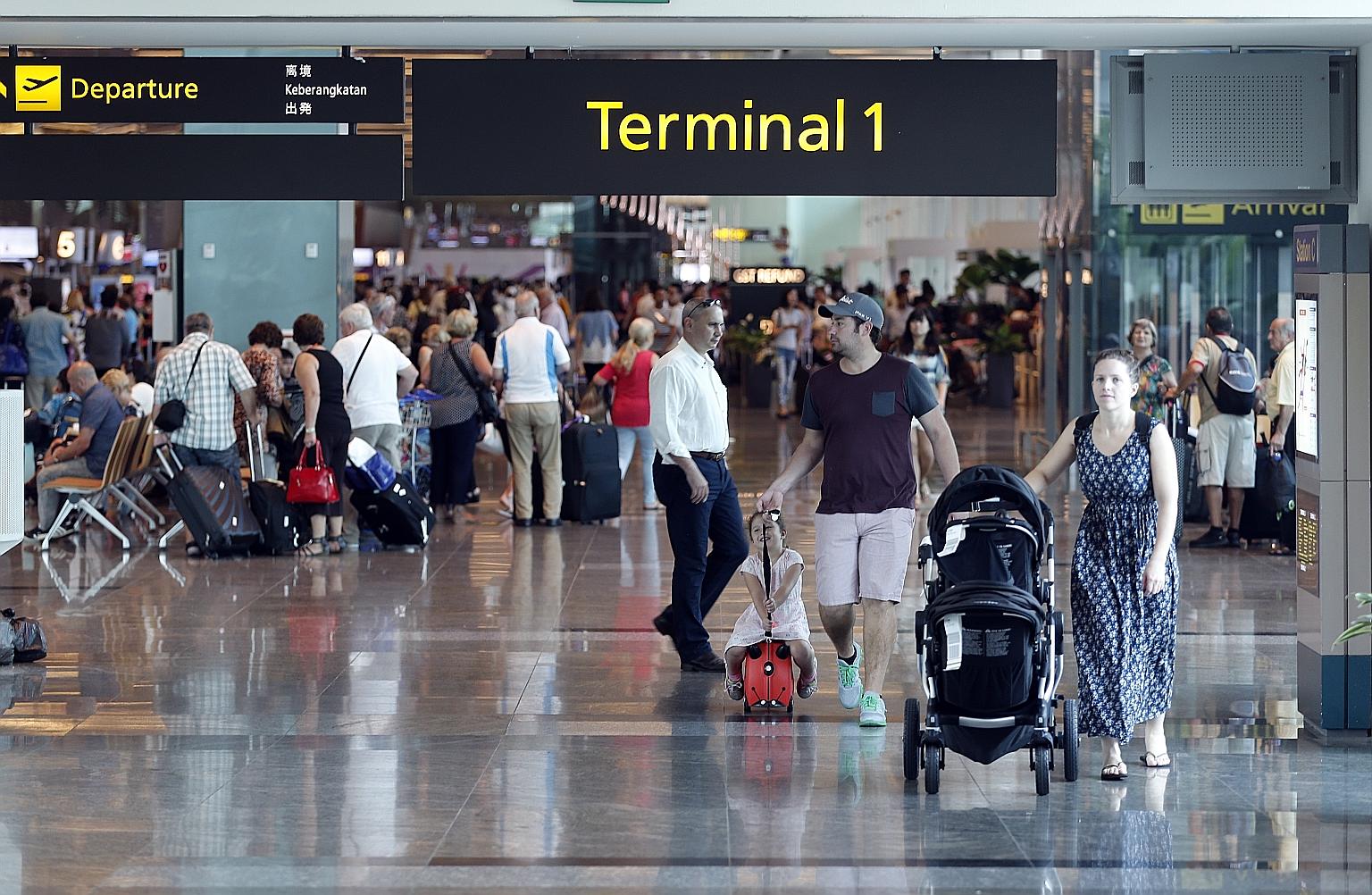Who will pay for and run Changi Airport Terminal 5?
Different financial and ownership models under study for mega development
Sign up now: Get ST's newsletters delivered to your inbox

The existing three terminals, 1 to 3, built and paid for by the Government, are now run by Changi Airport Group, a corporate entity set up in 2009.
ST FILE PHOTO
Karamjit Kaur
Follow topic:
Plans to more than double Changi's capacity have prompted the Government to rethink how the airport could be owned and run.
The existing three terminals, built and paid for by the Government, are now run by Changi Airport Group (CAG), a corporate entity set up in 2009.
A Transport Ministry spokesman told The Straits Times that it is exploring whether, in the longer term, alternative models for the ownership of new airport facilities might better support the national objective of keeping Singapore a competitive global air hub. She stressed that there are no near-term plans to change the current model.
The ministry has recently called for consultants to study the issue.
The outcome could determine who will pay for and run Terminal 5, slated to open in phases from the end of the next decade.
From 66 million passengers a year now, Changi will be able to handle 135 million by the time T5 is completely ready.
CAG is building T4, which will open next year, at a cost of about $1 billion. But the T5 project is far bigger, with the total development cost expected to cost tens of billions. This includes not just the terminal building cost but also the cost of building new taxiways, as well as works to prepare the reclaimed land where T5 will be built.
The new facility will be sited across Changi Coast Road.
The mega development provides a timely opportunity for different financial and ownership models to be assessed, industry analysts said.
Options include future terminals being owned and operated jointly by the public and private sectors.
A new operator could also end up running T5, to inject competition into the market to maintain the airport's competitiveness.
Government Parliamentary Committee for Transport chairman Sitoh Yih Pin said there are arguments for and against any model.
The key push for airport privatisation, which is not a new concept globally, is operational efficiency.
On the flip side, Changi Airport, viewed by many as the country's crown jewel and a national icon, has been well run by CAAS before and CAG now, he said.
Singapore Management University Assistant Professor Terence Fan, who specialises in transport, said that while there is merit in some form of private participation, "the devil is in the details".
"It should be clear, for example, that for a project of national economic importance the Government should retain some important say on certain details, including the quality of the construction as well as the number of aircraft and passenger throughput requirements," he said.

